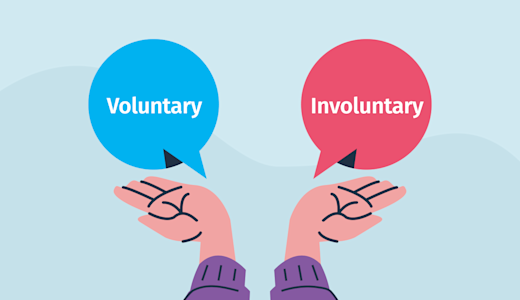Voluntary Churn vs. Involuntary Churn: How to Reduce Both

Churn. It’s the word your subscription business hates to hear, but the more you understand it the more you can reduce it.
Any customer that stops paying for your service has churned, but did you know that churn actually comes in two forms: voluntary and involuntary?
So, what’s the difference?
Most companies only think about the first type of churn. Voluntary churn, also referred to as active churn, happens when a customer makes a conscious decision to stop paying for your product or service.
But customers also churn unintentionally. Involuntary churn, also known as passive churn, happens when a customer stops paying for your service due to a failed payment, either by card expiration or cancellation, lack of sufficient funds, or changes like a new CVV.
Focusing on just one type of churn is like fighting half the battle. When you approach the problem from both angles you should see churn reduce significantly.
How to reduce involuntary churn
According to payment provider Recurly, an average of 13% of recurring transactions are declined each and every month. That’s a large percentage of transactions that are failing each month by just having stale credit card data on file. While there are many benefits of recurring payments for a subscription business, involuntary churn is something you’ll have to deal with that an ecommerce platform wouldn’t.
Be proactive
Mitigation of involuntary churn starts before the payment is due. You want to get in front of the problem by sending a reminder email prior to an upcoming payment and/or in anticipation of a card expiration to remind the customer to update their card information in your application. This reminder can also save the customer from the potentially embarrassing “your payment has been declined” email.
React to failed payments
Even with a great proactive strategy you can’t prevent all failed payments. Customers sometimes cancel cards, and banks decline charges for a multitude of reasons. This is where dunning comes into play.

Dunning is the process of handling and recovering lost revenue due to failed payments, typically by a series of emails and automated payment retries.
Consider the following dos and don’ts to create a great dunning experience for your customers:
DO:
Automatically retry payments. You should set a schedule to automatically retry payments. We recommend retrying the payment 4-5 times over the course of two weeks.
Provide an easy way for your customer to update their card info. Convenience is key here. Include a link in your dunning email directly to the spot in your app. Don’t make an already tedious process even more difficult by requiring customers to navigate to a spot in your app they rarely visit.
Brand your emails. In today’s day and age, any email asking for credit card information may be viewed with suspicion. Increase trust by using your branding and always sending from your domain.
DON’T:
Lock users out of your app. Involuntary churn is just that: involuntary. Don’t punish your customers for an honest mistake or oversight. Only after the entire dunning process is exhausted should you revoke access to your app.
Send emails right away. Getting a “your payment failed” email can be alarming and sometimes embarrassing, depending on who sees it at a company. Attempt one or two retries first before sending these types of emails out.
Checkout out our software guide for more dunning solutions.

Technology is helping
Some payment providers, such as Stripe, work directly with card networks and are able to automatically update card information for you. This includes if the card on file was lost, stolen or just expired. This means in many cases payments will continue to roll in without customers needing to do anything at all.
Keep in mind this may only work within specific card networks, countries, and will vary from payment provider to payment provider. Your best bet is to ask the provider you work with what they are able to do.
How to reduce voluntary churn
The first question to ask yourself if you haven’t already is “Should we allow self-service cancellation not?” There are many reasons the answer should be a resounding “Yes!” Need convincing? Now that you’re onboard, here are the key points to reducing voluntary churn with a self-service option:
Build a cancellation flow
A good cancellation flow reduces churn by reinforcing the value of your product and by presenting special offers targeted to the needs of specific customers. It’s also a great way to gather feedback on why customers leave (via a churn survey), which can be used in many ways.
Act on the feedback gathered
You won’t be able to save everyone at the point of cancellation, and that’s okay. All is not lost. The valuable feedback you gathered in the customer exit survey can be put to use by your product teams to improve your product.
Make use of win-back campaigns
Now that you’ve built your cancellation flow, gathered feedback from it and used that feedback to improve your product, it’s time to launch a win-back campaign to those past cancellations with the goal of bringing them back.
In conclusion: Voluntary churn vs. involuntary churn
As customer acquisition costs continue to increase for subscription businesses, focus has naturally shifted to the value of customer retention, and for good reason–retaining a customer is 6-7 times less expensive than acquiring a new one (White House Office of Consumer Affairs). By implementing the best practices around voluntary and involuntary churn, you’re fighting both halves of the battle.

